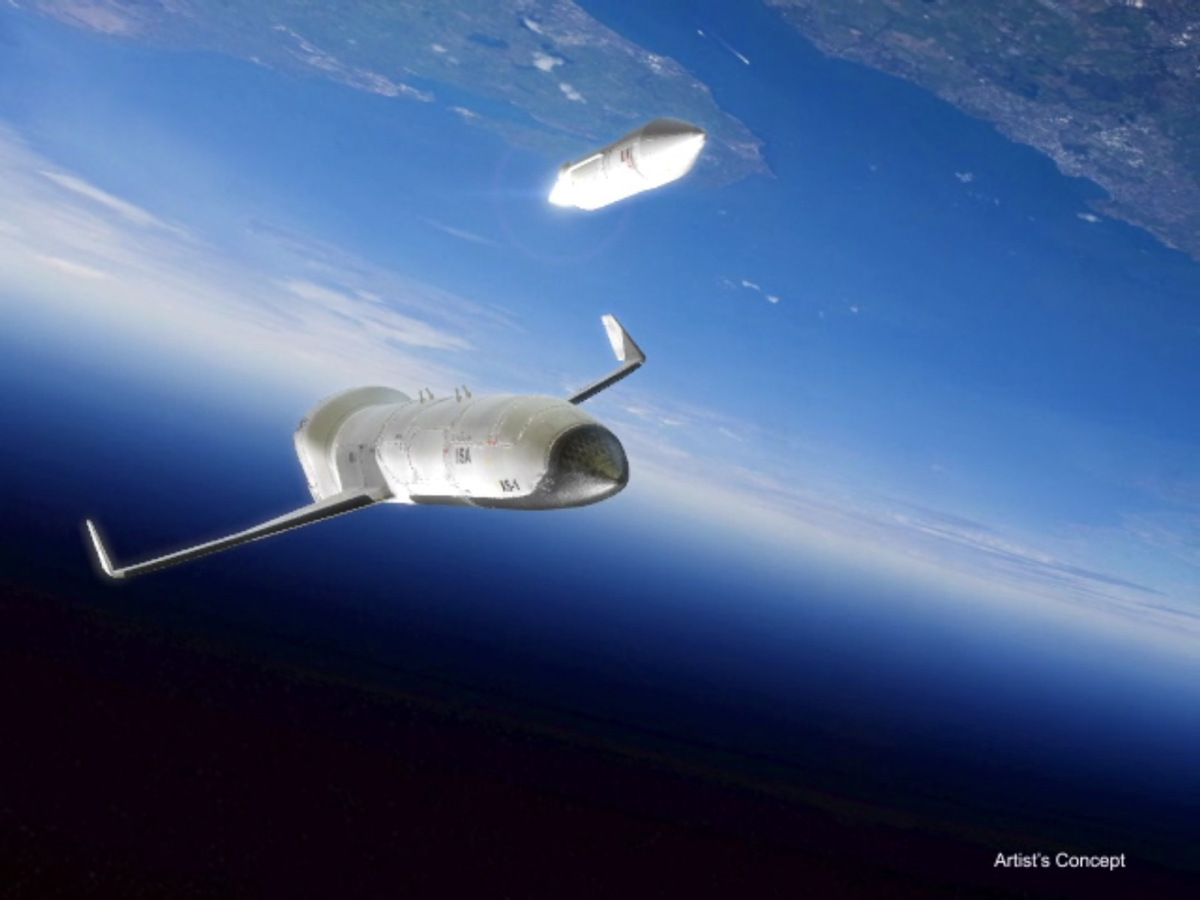Wanted: Unmanned Space Plane to Fly On the Cheap

It's a dream older than the Space Age itself: a fully reusable rocket that can fly into space, deploy its cargo, return to Earth and then do it again rapidly, cheaply and with minimal maintenance.
Despite billions of dollars and decades of work spent on projects as diverse as NASA's space shuttle, National Aerospace Plane and Rotary Rocket, cheap access to space is not yet a reality, making it difficult to unlock the enormous potential of outer space. However, all that could change in the next few years, according to those working on a new set of vehicles.
"The need is there. The technology is ready. So, let's go do it," said Jeff Lane, chief engineer of Advanced High Speed Systems at Northrop Grumman Aerospace Systems, during a cheap access to space panel discussion during the NewSpace Conference in San Jose, California.
Lane's company leads one of three competing teams in the XS-1 program, which is the U.S. government's latest attempt at cheap access to space. The program, led by the Defense Advanced Research Projects Agency (DARPA), aims to develop a fully-reusable unmanned vehicle with aircraft-like operations capable of delivering payloads weighing 3,000 to 5,000 lbs. (1,360 to 2,267 kilograms) to orbit for less than $5 million per flight. The program's technical goals including being able to fly 10 times in 10 days. [See images of the XS-1 program]
DARPA awarded Northrop Grumman, which is teamed with Virgin Galactic, a one-year study contract. The agency also awarded contracts to Masten Space Systems (teamed with XCOR Aerospace) and Boeing (teamed with Blue Origin).
Significant challenges lie ahead for whichever competitor(s) end up fielding an XS-1 test vehicle, according to Masten CEO Sean Mahoney.
"This is not going to be a simple thing to make a vehicle that can turn and fly 10 times in 10 days," Mahoney said during the panel. "You don't get the option to refurbish the vehicle if you have to fly 10 times in 10 days."
Get the Space.com Newsletter
Breaking space news, the latest updates on rocket launches, skywatching events and more!
Masten has experience in flying much smaller vehicles with rapid turnarounds using very small crews.
"One of the ways to reduce the cost of access to space is to employ fewer people," Mahoney said. "That is something that is sometimes against the grain of, we have so many great trained people in the industry, but in order to reduce the cost of launch, we have to be able to operate with fewer people."
Dan Rasky, chief of the Space Portal Office at NASA Ames Research Center, pointed out that the XS-1 program is not the only effort being pursued that is aimed at making access to space cheaper. For example, SpaceX is attempting to recover the first-stage of its Falcon 9 booster for reuse. XCOR is also working on a fully-reusable suborbital space plane named the Lynx that will test out technologies for a reusable orbital system.
"The exciting thing right now, after all these long decades of chasing this problem, is that we're really in the era of what I call experimentation," Rasky said. "If you look at other industries, cell phones, for example, you hit a point where there's a lot of different models being tried, a lot of different options being pursued. And you'll find that the dominant designs that work the best, and those become the iPhones and Androids hat dominate the market. We really haven't had this period of experimentation, in all honesty."
The renewed effort to develop cheap access to space is being driven not just by a desire to do more, but by economic necessity.
"The DOD [Department of Defense] and Space Command have come out and basically said that the fact the cost of getting to space is essentially getting so high that our national security is essentially put at risk," Rasky said. The biggest, deepest pockets in the world, the United States government, is finding itself unable to sustain the type of infrastructure we need to protect us, me, my family."
Follow us @Spacedotcom, Facebook and Google+. Original article on Space.com.
Join our Space Forums to keep talking space on the latest missions, night sky and more! And if you have a news tip, correction or comment, let us know at: community@space.com.
Douglas Messier is the managing editor of Parabolicarc.com, a daily online blog founded in 2007 that covers space tourism, space commercialization, human spaceflight and planetary exploration. Douglas earned a journalism degree from Rider University in New Jersey as well as a certificate in interdisciplinary space studies from the International Space University. He also earned a master's degree in science, technology and public policy from George Washington University in Washington, D.C. You can follow Douglas's latest project on Twitter and Parabolicarc.com.









